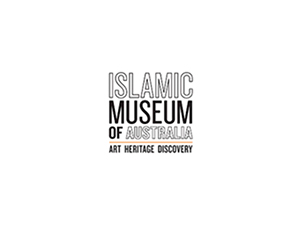Four Australian Stories of Sacrifice
With the outbreak of World War Two, Muslim men temporarily working in Australia were recruited and co-opted into Australia’s Defence Forces. For the Indonesian indentured pearl divers that survived the war, the promises of naturalisation for their services were betrayed. For Albanian rural labourers, their service became a pathway to belonging and acceptance in Australia. The Crescent Under the Southern Cross tells the stories of four Muslim men who fought for Australia. Their stories reveal the complexity of migrant lives in times of war, the impacts of the White Australia policy, and the universal desire for freedom.
Abu Kassim
Rebel and Warrior
Abu Kassim bin Marah was born around 1916 in a village outside Seremban, south of Kuala Lumpur in Malaysia. As a young man he ventured to Australia for work in Broome as a pearl diver, and while there started a relationship with Patricia Dijiween, a First Nations woman and the mother of present-day Senator Pat Dodson. Patricia and Abu Kassim had two daughters – Faye and Georgina – despite not being able to gain permission to marry from the Western Australian Protector of Aborigines.
Abu Kassim was classified as an ‘Allied Alien’ and Mohammadan, but was nonetheless able to enlist in the Australian Labour Corps in 1942, before being recruited in 1944 to Special Operations Australia, an elite commando force that was also known as Z Special Unit. Abu Kassim appears to have regularly pushed back against authority, with a history of disobeying orders and serving time in detention barracks. But after attending the Fraser Commando School he was promoted to Lance Sergeant in March 1945 and departed for service overseas.
Records suggest that he was a highly effective member of Z Special Unit, performing numerous missions behind the lines of the occupying Japanese forces. He was eventually wounded in hand-to-hand combat, and also suffered from myelitis, which would eventually force him back to Australia.
Abu Kassim was discharged from the army in October 1946 with chronic myeloid leukemia, and unable to care for his daughters, gave blessing for them to be in the guardianship of the new husband of Patricia, Snowy Dodson. He died on the 3rd of March, 1949, in a Perth hospital, and was buried in an unmarked grave in the Muslim section of the Karrakatta cemetery.
Laver Xhemali
Farmer, Larrikin and Rifleman
Laver Xhemali (or Jemali) was born in Sovjan, Albania, in 1921, and at the age of 17 travelled to Australia via Italy. For four years he worked across various parts of Australia, including with a relative in Shepparton, northern Victoria, before enlisting in the army at the Melbourne Town Hall in February 1942.
Despite not being a naturalised Australian, Laver underwent six months in labour battalions and training, before being attached to the 13th Rifles of the 2/23 Battalion in August, and embarking for North Africa a week later. He disembarked at Suez on 8 October and immediately went AWOL. Family lore holds that once in the Middle East he had planned to abscond and make his way home to Albania in order to find a wife. His service record over the next three years shows he was something of a larrikin – he was repeatedly disciplined for failing to appear for parades or not following military procedures.
As with many Australian units in North Africa at the time, his battalion was reassigned to the Pacific theatre as Australia came under direct threat of Japanese invasion in 1943. He was sent to the front line in the north of Papua New Guinea in October, where his unit was involved in the Battle of Wareo and other missions that aimed to outflank the Japanese from their entrenched positions. Laver Xhemali was wounded in action on 4 December at Kuanko and returned to Australia for treatment. Persistent health problems, including bouts of malaria, meant that he was never able to return to active service.
Laver returned to agriculture after the war, working in Mooroopna, and still seeking an Albanian wife. But Albania’s Hoxha regime refused him entry, so he ventured to Ulqin, Montenegro, where he eventually married Shemsie and returned with her to farming in Australia – first in North Queensland and then near Kyabram in Victoria. In 1973 he was finally permitted entry to Albania to visit his family, whom he hadn’t seen in more than 35 years. He died in 1991 and was buried, with full military honours, in a Muslim military grave in Shepparton.
Samsudin bin Katib
Sam the Pearl Diver
Samsudin bin Katib was born in 1918 in the town of Kumango, West Sumatra, in today’s Indonesia. At the age of 14, most likely with his family, he moved to Singapore, and in 1937, aged 19, sailed from Singapore to Australia on the Centaur.
Samsudin disembarked in Western Australia and soon began work as an indentured pearl diver in Broome. At that time, Broome was one of the few multicultural outposts in White Australia, but the town’s economy was dominated by the white owners of the pearl diving enterprises, while Asian and Aboriginal workers lived in shacks without sanitation or electricity.
On 6 March 1944, Samsuddin was enlisted into the Australian Imperial Force as a private at Claremont, WA. Within 6 months he was recruited into Z Special Unit, part of the newly created Special Operations Australia, and sent to training at the Security Defence Force on Fraser Island (K’gari) in Queensland.
Alongside many other Asian pearl divers, Samsudin was evacuated south in 1942 and sent to the Detention Barracks in Fremantle. Due to the large Japanese presence in Broome, coupled with the successful Japanese invasion of Sumatra in February and March 1942, Samsudin was more than likely classified as an enemy alien and interned. Having most likely been given the option of enlisting in the army or remaining interned, he chose to enlist, and joined the Civilian Military Forces in June 1942.
Within six months he was recruited into Z Special Unit, part of the newly created Special Operations Australia. He was recruited because of his proficiency in Malay, his knowledge of the seas and islands north of Australia, and his physical fitness.
Samsudin’s missions were dangerous and several of his colleagues were killed in action. He was deployed into Borneo in June 1945 to perform intelligence gathering in the lead up to and during the allied invasion at Labuan. Samsuddin performed 199 days of service, was promoted to corporal, and received the standard medals for activity in the Pacific theatre. He returned to Australia in December 1945 and was discharged on 17 April 1946.
Muharem Ali
From Albania to Ambon
Muharem Ali was born in 1910 probably in the vicinity of Korçë, then part of the Monastir Vilayet of the Ottoman Empire, but soon to be part of an independent Albania. Muharem was most likely raised a Bektashi Muslim.
Muharem Ali arrived in Australia in the 1930s and was living in a migrant work camp in Yallourn,Victoria, when he was naturalised as a British subject. He later worked in Footscray in market gardens,as well as being a building labourer. In 1941 he married Sylvia May Harding, an Anglo-Australian woman from Riana, Tasmania, who was then living in Seddon.
Muharem Ali enlisted on 26 April 1941 at Royal and two weeks later was transferred to the Darley military camp in Bacchus Marsh, northwest of Melbourne. After three weeks at Darley he was relocated to Darwin to join the 21st Australian Infantry Battalion, or “Gull Force”.
The Gull Force had arrived in Darwin in March but were left idle because of a political dispute. The Dutch East Indies had asked the AIF for help in protecting islands not yet occupied by the Japanese, but this approach was questioned by the British, who pressured the AIF not to give units to the Dutch and instead provide support to UK forces struggling to avoid a German invasion.
The bombing of Pearl Harbour on 7 December 1941 immediately changed the situation, and the Gull Force disembarked for Ambon on 13 December. Ambon was poorly defended by the Dutch, and the Australian troops had had little time to acclimatise to the terrain when the Japanese started their assault. On the night of January 30 the Japanese launched an invasion on the largely undefended north and south of Ambon, and were able to surprise most of the Australian and Dutch forces, who had incorrectly anticipated an attack on the main harbour. By February 2 – also the date when Muharem Ali was declared missing – almost all of the Dutch and Australian forces were forced to surrender.
Muharem Ali was placed in the Tan Tui prisoner of war camp, and would remain there for the next three years. From 1943 to 1944, work demands increased as rations were constantly decreased, leading to a rise in death by exhaustion as well as sickness related to malnutrition (such as beri-beri) and terrible ulcers caused by injuries. After a second major bombing of Tan Tui in August 1944, prisoners began to die in rapid numbers.
Muharem himself succumbed to illness on 30 April 1945, just a few months before the camp was liberated. The Japanese surrendered on 21 August and the camp was liberated on 10 September by the Royal Australian Navy. By this point, 77% of soldiers of the Gull Force had perished on Tan Tui. Only 123 survived out of more than 500, a death rate more than twice
the average of POW camps in the Pacific.
Partner Organisations

The Department of Veterans’ Affairs (DVA) is
a department of the Government of Australia,
established in 1976, and charged with the
responsibility of delivering government
programs for war veterans, members of the
Australian Defence Force, members of the
Australian Federal Police, and their
dependents.

The Alfred Deakin Institute for Citizenship and
Globalisation (ADI) is a leading humanities
and social sciences research institute based at
Deakin University, Australia. ADI creates
cutting-edge knowledge about citizenship,
diversity, inclusion and globalisation which
informs scholarship, debate and policy.

Deakin University is a public university based
in Victoria, Australia. Founded in 1974, today
it is one of Australia’s leading tertiary
education providers.

The Islamic Museum of Australia is a
community foundation and leading cultural
institution dedicated to providing education
experiences focused on the heritage of
Muslims in Australia.

The Australian Intercultural Society (AIS) is a
not for profit organisation focused on building
relationships and fostering positive relations
between the different cultural communities
of Australia.

The Shepparton Albanian Moslem Society
(SAMS) is one of the oldest continuous
Muslim associations in Australia, being
founded in 1955. The SAMS serves both the
Muslim community of Shepparton and
district, including its mosque, which is the
oldest purpose-built mosque in Victoria.
Meet the Project Team

Ihsan Yilmaz
Professor
James Barry
Dr
Simon Wilmot
Dr
Will McCallum
"Lead Coder"